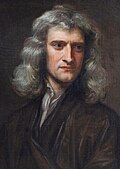Episode summary
The episode begins with Tyson describing how we were born into this world without an explanation of our surroundings, much like a baby abandoned on a doorstep. To help us learn about our surroundings, Tyson explains how we manifested pattern recognition early in mankind, sharpening over eons of evolution. We distinguished predator from prey; and poisonous plants from nourishing ones - enhancing our chance to live and reproduce, and passing on our genes. We used pattern recognition in astronomy and astrology, where different cultures, recognizing the patterns of stars in the skies, projected different symbols and pictures for constellations. We used it to predict the passing of the seasons, including how every culture determined that the passage of a comet was taken as an omen. Tyson continues to explain that the origin of comets only became known in the 20th century due to the work of Jan Oort and his hypothesis of the Oort cloud.
Tyson then continues to relate the collaboration Edmund Halley and Isaac Newton in the last part of the 17th century in Cambridge. The collaboration would result in the publication of Philosophiæ Naturalis Principia Mathematica , the first major work to describe the laws of physics in mathematical terms, challenging the prevailing notion that God had planned out the heavens, and against objections and claims of plagiarism from Robert Hooke, and financial difficulties of the Royal Society of London. Tyson explains how Newton's work would influence many factors of life, including modern space flight. Tyson further describes Halley's contributions including determining Earth's distance to the Sun, the motion of stars and predicting of the orbit of the then-unnamed Halley's Comet using Newton's laws. Tyson contrasts these scientific approaches to understanding the galaxy compared to what early mankind had done. The episode ends with animation of the Milky Way and Andromeda galaxies merging based on the principles of Newton's laws.


